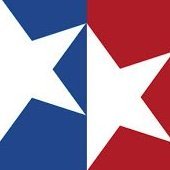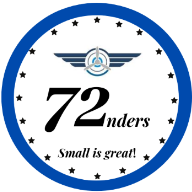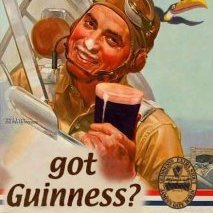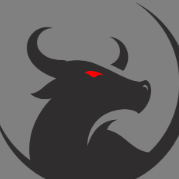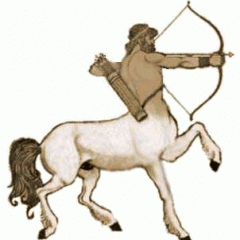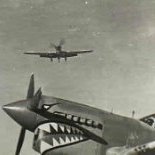Search the Community
Showing results for tags 'Thunderbolt'.
-
Hello Britmodellers, Here's another Revell P-47M, reverse-engineered into a D-28-RA. Because all my Thunderbolts had red cowling fronts, I required one with a blue engine cowling. The "Thunderbolts over Germany in Color" documentary on YT was another inspiration. Thanks for looking! Luka
- 1 reply
-
- 28
-

-
- Thunderbolt
- 1/72
-
(and 1 more)
Tagged with:
-
Trumpeter is to release 1/24th Republic P-47 Thunderbolt kits: - ref. 02427 - Republic P-47D Thunderbolt Razorback - ref. 02428 - Republic P-47D Thunderbolt Bubbletop - ref. 02428 - Republic P-47D Thunderbolt dorsal fin - ref. 02428 - Republic P-47N Thunderbolt Source: https://www.bilibili.com/video/BV1Ug4y1S7Sh/ V.P.
- 6 replies
-
- 2
-

-
- P-47
- Thunderbolt
-
(and 1 more)
Tagged with:
-
Hallo I am starting a serie of Thunderbolts. This are my Thunderbolts. C-Version from Dora Wing D- Version razorback from Tamiya as Kansas Tornado II D-Version bubble top from Tamiya as Miss Fire D-Version bubble top MiniArt as No Guts No Glory M-Version bubble top from Tamiya as Josephine My Flying Machine All five engines arte now rigged for the ignition wires. I used two resin engines for the Tamiya P-47D from Aires / Quickboost. Wiring was done with 0,3mm lead wire. The Thunderbolts of my wife will include alse a Lancer. Lancer Variant from Dora Wing D- Version razorback from Tamiya as JABO D-Version bubble top from Tamiya from Glenn Eagleston D-Version bubble top MiniArt from Gabreski M-Version bubble top from Tamiya from Leo Butiste Happy modelling
- 62 replies
-
- 14
-

-

-
- WW2
- Thunderbolt
-
(and 1 more)
Tagged with:
-
Hello all, This Tamiya 1/72 P-47D-27 was built in the markings of Lt. James R. Hopkins' aircraft. The model was painted with AK real colors acrylics, and weathered with Tamiya enamel washes and weathering powders. Some Aftermarket items were used: -Eduard PE in the cockpit -Master pitot tube -Brassin wheels -Montex decals Some details were added to the model including the fuel supply plumbing and tail-wheel landing gear door actuators. I used Hypodermic needles for the gun barrels. I built this model in a GB with my dad, who built 4 P-47s, which you can see in this post: Happy New Year to everyone, Anna
-
Hello to all, This gaggle of P-47s were my latest completed project, with kits coming from 3 different manufacturers, including some heavy profile corrections and cross-kit adaptations. 1) P-47D-27-RE "Elsie", "Y8-E" represents an aircraft flown by Major Clay Tice of 507th FS, it is built from Tamiya's P-47, and the decals used are from Eagle Cal. 2) P-47D-28-RE "Jeanie" was built using the veteran Academy's P-47 kit. Mine became a bit of a “Frankenstein” kit receiving many parts from other kits, including a spare Tamiya P-47 cowling, a spare Revell landing gear, resin wheels, Tamiya propeller, Tamiya bomb racks, etc. The engine was replaced with a Quickboost one. The nose art decals come from a Kagero's book :SMI library: P-47 Thunderbolt with the USAAF - European Theatre of Operations. 3) P-47M-1-RE "HV-M" represents an aircraft flown by Capt. Boleslaw Gladych of the 56th FG, the model used was Revell's P-47, that required a lot of work to correct the ventral profile ("fat belly"). Other area that needed some great attention was the engine cowling (with horrible open cooling flaps) that were completely replaced on the close position. The Decals for Gladych's aircraft are from 3 different decal sheets including a cartograf sheet from a Hobby 2000 boxing of Revell's P-47 and some Techmod as well. Besides the troubled ventral area, the Revell kit captures the P-47 lines very well and its surface detail is as good as the Tamiya kit. 4) P-47D-25-RE "A1", in Brazilian markings is a Revell kit as well, heavily modified and upgraded. The kit comes from one of the first Revell issues of the kit and had a much better moulding quality. The Hobby 2000 boxing seems to show the moulds wearied and damaged, with a lot of flash and ill formed parts. decals for "A1" are from 3 different sources too, including FCM decals and DK Decals. Note: The Hamilton standard propeller on "A1" is a temporary one, the aircraft's propeller should be a Curtiss symmetrical, the reason for this inaccuracy is because we currently don't have a Curtiss propeller at hand that we can use for the kit. Common details to all kits: -For the NMF Mr Color Super Metallic II paints and Vallejo Metal Colors acrylics were used. The rest of the camo on the NMF P-47s and Gladych's aircraft was painted with Ak Real Colors and Tamiya acrylics. Note: The controversial Night Blue colour for Gladych's aircraft was home-mixed (looks much lighter on the photos below that on natural light) -Eduard Photo-Etched was used for the interior in all the kits, -Brassin wheels were used on the Tamiya and Revell kits. -Scratched-built sway arms and fuel lines were added to all the models. -All radial engines had ignition harnesses, details and even manufacturer plates added. -All kits' canopy bubble sections are vacform parts. P-47 "Elsie" was awarded David Hannant Memorial award, first place, at Scale Model World 2023. Happy Modelling and Happy New Year to all!
- 12 replies
-
- 34
-

-

-
With the release of Miniarts P-47 kit, it's time to build Tamiya's 1/48 kit out of the stash. Partially out of the box, just rivetted, wired the engine and brake lines, added the feed lines on the belly tank, a standby gunsight, and an Ultracast seat. Finished with Tamiya acrylics, and Techmod decals. Thanks for looking, Colin Build log: https://www.britmodeller.com/forums/index.php?/topic/235131366-p-47d-25-gabby-gabreski/
- 10 replies
-
- 38
-

-

-
Halberd Models is to release - a 1/48th Republic XP-72 Ultrabolt conversion set for the Tamiya P-47D Thunderbolt bubbletop kit. - a 1/32nd Republic XP-72 Ultrabolt conversion set for the Hasegawa P-47D Thunderbolt bubbletop kit. Source: https://www.facebook.com/permalink.php?story_fbid=pfbid02sJabMXYpLjTuQexzgdTYL4gAzC5bZ15PL3ZBe6GDqnGqJLeAVnDpfHitNTyjAZMNl&id=100064057054695&locale=pt_PT V.P.
- 16 replies
-
- 5
-

-

-
- P-47
- Thunderbolt
-
(and 1 more)
Tagged with:
-
My second entry I've had stewing ing the stash for a while. A ProModeller P-47N That I got used. It was partially started but I'm re-doing most of that because of the incorrect colours initially used. Particularly the what I think is supposed to be yellow Zinc Chromate. and the interior colours. I'll be covering the exterior in foil since that looks alot better than paint and I'm waiting on a P/E set for the interior.
- 25 replies
-
- 11
-

-
- 1/48 ProModeller
- P-47N
-
(and 1 more)
Tagged with:
-
Hello! I think it's time I try to get back into some scale modelling. I've not built anything in years (certainly not finished anything) but I'm beginning to get that itch again. I do like a Thunderbolt (who doesn't?) so why not try getting the modelling bug back with one of Tamiya's finest! I'm going to attempt a NMF (a first for me) with full invasion stripes and checker nose Jug, from the 83rd Fighter Squadron, 78th Fighter Group based in Duxford. The only photo I have: The kit I will ruin will be this one: I have an Eduard set to improve the cockpit and add seatbelts too. Looking forward to the start ☺️ Si
- 3 replies
-
- 10
-

-
- Tamiya 1/48
- Thunderbolt
-
(and 1 more)
Tagged with:
-
Halberd Models is to release soon a 1/48th Republic XP-47H Thunderbolt conversion set - ref. for the Tamiya P-47D Razorback kit. Source: https://www.facebook.com/permalink.php?story_fbid=pfbid0wdFwFeqT6dpydcZp7o94SaS5c8SYvJnKvYgC6wngbrse5kGs4hb6sk3JqMaa1ZKvl&id=100064057054695 V.P.
- 26 replies
-
- 14
-

-
- P-47
- Thunderbolt
-
(and 1 more)
Tagged with:
-
Hello again. For this build thread, I've chosen the short-lived Republic P-47B "Double Twister", which as far as we know, only flew in this configuration one time, and of which only one photo was supposedly ever taken. In fact, most people at Republic didn't even remember the aircraft, but the pilot did, almost killing himself because he forgot to set the trim on the rudder, to allow for the offset of the vertical stabilizer. For those newer to modeling out there, let me explain. On single engine propeller-driven aircraft, the vertical stabilizer was usually offset, from 1 - 3 degrees, to counteract the torgue of the rotating propeller. This is still done today, on R/C aircraft -- not sure about real life. A few decades back, the super-detailing crowd was fussing with kit manufacturers about not having this feature built into the kits (seriously complicating the molding process, by the way), and made a big hullabaloo when some manufacturer actually did it, as a selling feature. I guess the kit had other issues, or didn't sell that well, because the whole mess finally just went away. I can't even remember what kit or kits this involved, but I guess most manufacturers said "if you want it, YOU make it"; and many of us did, as was the fashion in those days -- when somebody did something, everybody else was expected to follow suit, whether it was Rub-'N-Buff Paste wax or Floquil Old Silver for natural metal finishes, to later using heat-stretched Bic Ball Point pen filler tubes (emptied and cleaned out), and stretched into tiny gun tubes. I don't think that any of those products exist today, but back IN THE DAY, you just had to do it! Nowadays, it would be black-basing or hairspray technique or the like. Time marches on... But, I digress. Here is the said only picture of the said aircraft: Not shown well in the photo, are the twin contra-rotating props, and while they worked, the gearbox was fiddly, and the speed increase, I believe, was only 1 mph better than a regular P-47B, so it just wasn't worth the effort to alter P-47 production at the time. Also, you will note the odd color of the aircraft. The actual color is unknown, but many claim it is just plain old yellow zinc chromate primer, which sort of makes sense, in a certain way. Why waste the paint job if the plane crashes?. On the other hand, the obvious gloss on the paint is not what you would expect from the primer, and if you're going to the expense of clear-coating the primer, why not just paint the thing O.D. like all the rest? Maybe it's just oil smeared here and there, but I think it only had one flight, so - go figure. I have massaged the photo in Photoshop every which way I can think of, and still can't come to a conclusion. Since all of the Republic records were destroyed when Republic sold out, we will probably never know. However, I welcome any comments, informed or opinion on the matter, before I get to that stage. Otherwise, I will probably paint it yellow zinc chromate, just because its different... To do the dirty deed, I will fall back on my sawing and hacking favorite P-47 Razorback kit, the 1/72 Academy kit, mostly because it's cheaper than the Tamiya, which is considered a better kit. I'll save that one to build a real "D" model some day -- I hope!: On the bottom row, from the left, a resin copy of six propeller blades I got from some resin kit or the other, wherein I decided to build the 4-bladed version vs the contra-prop version, probably the Alliance XP-72 kit, but I'm not sure. Anyway it would not be that hard to take a larger prop spinner, perhaps from a P-40 and fill and sand it to shape and scrounge prop blades from the spares box. In the middle, somebody's P-47 cockpit set from the spares box, and a set of P-47 razorback masks, mostly because I happen to have them on hand. I also have a Rob Taurus canopy, which I will probably not use, but we'll see. As with my XP-47 Prototype build HERE I will begin by marking off the scale 8 inches of length that have to be removed from the front of the fuselage, below, where "A" is the scale 8 inch wide strip of tape I used and "B" is simply one of the pencil lines drawn: Above right, the tape-cutting device I used allowed me to cut a piece of tape 3 times the 0.8mm width, or a total of 2.4mm in real life. This, taken along with the width of the saw kerf, will get us right at 8 scale inches. Above left, the arrows point to the marked lines, which have also been scribed, to help align the saw when I make those cuts. However, I like to start by sawing through the wing root vertically, up through the marked lines, to leave as much of the wing root structure as possible, allowing for less work and filling later. Above right, the other lines are sawn through, separating the fuselage into two parts, and showing the removed plastic. I will continue with the butchery, when I return, anon... Ed
-
Patrol Torpedo Boat PT-160 (05175) 1:72 Revell PT Boats by their very name are Patrol Torpedo Boats. They are smaller fast attack craft designed primarily to launch torpedoes at enemy vessels using their fast speed as a their primary advantage. Elco were the makers of the longest, and most produced of these PT Boats made for the US Navy. Even though the main armament was four torpedoes later towards the end of the war some boats received two eight cell Mark 50 rocket launchers. These launched 5" spin stabilised Mark 7 and Mark 10 rockets. These had a range of upto 11,000 yards. These were equivalent to a 5" shell from a destroyer and the PT Boats carried 16 in their tubes with 16 reloads. This gave these Boats quite a punch. PT-160 was laid down, launched and completed in 1942. She served in the Pacific war and was struck off in late 1945. During here time she was fitted with an experimental "Thunderbolt" mount consisting of four 20mm and two .50 cal. machine guns on the aft position. This must have been quire a sight to see firing. The Kit This is re-issue of Revell's new tool kit from 2018 with new parts to reflect the different armament of these boats, namely here the Thunderbolt mount. As well as the main hull parts there are a further 11 sprues of grey plastic and 3 clear sprues. Construction begins with the hull. The left and right parts are joined with a centre bulkhead being added to stiffen things up. A small insert is added into the bow. The lower hull part at the back is separate and this needs to be added in. The transom will need to be added, though for some reason this is not mentioned in the instructions! its not there in step 3 but appears in place in step 8? The stand is now assembled if needed. The interior parts of the deck houses must be added to the main deck and this can then be joined to the lower hull. Underneath the triple shafts with their screws and individual rudders are added to the hull. Finally on rear the transom the exhausts are put on. Moving to the upper deck the superstructure of the wheelhouse and main deck house is made up along with its internal parts. Various deck fittings, ladder, vents and lockers are added to the deck. The side mounting structure for the machine guns is built up and these go on. Next up the four torpedoes are assembled and mounted to the deck. At the rear either the experimental Thunderbolt mounting can be made up and fitted, or the later standard 20mm can be added in its place. 7 Markings The decal sheet has markings for PT-160 in 1942 when she was fitted with the mount at the Elco works, and then later in 1943 when serving in the Pacific. Conclusion Its good to see this out representing this unusually armed PT boat. Highly recommended. Revell model kits are available from all good toy and model retailers. For further information visit or
-
Hi all! This is my first WWII build. OOB Tamiya, lovely kit. Aftermarket decals SuperScale Decal No. 72-811. Tamiya acrylic base coats with Tamiya enamel pin wash and some weathering with Abteilung 502 and Mig Oil Brushers. A very loud shout-out to Seamus whose P-47 inspired and served as the model for this build. Thanks for looking!
- 11 replies
-
- 22
-

-
- Thunderbolt
- Razorback
-
(and 1 more)
Tagged with:
-
P-47D Razorback & Bubbletop Update Sets (for Tamiya) 1:48 Eduard If you thought you’d missed out on the wave of super-detailed aftermarket parts using new technology for your older kits, you might be right in some situations, but if you have one of Tamiya’s still excellent P-47D Thunderbolts, whether it’s the Razorback, or the Bubbletop with the cut-down fuselage to improve rearward vision, you’re in luck. These relatively old kits still hold up incredibly well given their age, but any styrene instrument panel can be improved by aftermarket that is pre-painted or printed in the correct colours to begin with. Add to that a set of paint masks to keep your canopy in pristine condition, and you’ve got a great way to upgrade your kit relatively quickly and easily. The cockpits of the two variants of the Thunderbolt were subtly different, so both the sets are broadly the same, but with those minimal changes between them, which seems to extend only to the instrument panel, they still build essentially the same. The masking sets are vastly different from the windscreen aft, as you will be able to see in the drawings below. P-17D Razorback & Bubbletop SPACE (3DL48077 & 3DL48078) The Eduard SPACE sets use new 3D printing techniques that lay down successive layers of different colour resin, creating highly realistic almost full complete panels that are supplied on a decal sheet. They can depict metallic shades, plus glossy, satin and matt colours too, which really ups the detail on everything they print. In addition, a small sheet of nickel-plated and pre-painted PE is included for the aspects of the set that lend themselves better to this medium, such as seatbelts and rudder pedals. The printed sheet contains the beautiful instrument panel, with copious additional decals for the side consoles, stencils and sidewalls after removing the moulded-in detail, while the PE includes a set of four-point pre-painted seatbelts with comfort pads under the buckles; a raised stand for the floor with a decal with some controls on the floor; wiring loom on the sidewalls linking various parts together; backup ring sight on the gunsight with a bead externally in front of the cockpit, and adjustment ratchets on the rudder pedals, where you are also told to drill holes in the bottom of the foot pedals. Externally, there are a pair of circular mesh grilles for the intakes in the nose; stencils for the main gear legs, and a fuel cap for the flattened fuel tank often carried under the belly. The difference between the Razorback and the Bubbletop extends only as far as the former has a cut-out in the top centre of the panel, while the latter has the notch in the styrene panel covered over with additional informative stencils. P-47D Razorback (3DL48077) P-47D Bubbletop (3DL48078) Tface Masks (EX881 & EX882) Supplied on a sheet of yellow kabuki tape, these pre-cut masks supply you with a full set of masks for the canopy both inside and out, with compound curved handled by using frame hugging masks, while the highly curved gaps are in-filled with either liquid mask or offcuts from the background tape. In addition, you get a set of hub/tyre masks for the wheels and formation lights, allowing you to cut the demarcation perfectly with little effort. P-47D Razorback Tface (EX881) P-47D Bubbletop Tface (EX882) Conclusion It’s great to see these sets coming out to improve the cockpit of these ageing gems of kits that many of us have in our stashes already. I was tempted to get a Tamiya Bubbletop now, even though I built the Academy kit some years ago when Eduard reboxed it. Highly recommended. Review sample courtesy of
-
HobbyBoss is to release a 1/48th Fairchild-Republic A-10C Thunderbolt II kit - ref. 81796 A new variant from its original A-10 kit with a new sprue - ref. 80323 - link Source: http://www.hobbyboss.com/index.php?g=home&m=article&a=show&id=207&l=en V.P.
- 29 replies
-
- 4
-

-

-
- A-10
- Thunderbolt
-
(and 1 more)
Tagged with:
-
MiniArt is to release 1/48th Republic P-47D/M Thunderbolt kits. Source: https://miniart-models.com/wp-content/catalogue/2022/index.html - ref. 48001 - Republic P-47D-25RE Thunderbolt - advanced kit - released - ref. 48009 - Republic P-47D-25RE Thunderbolt - basic kit - released - ref. 48015 - Republic P-47D-28RE Thunderbolt - basic kit - ref. 48023 - Republic P-47D-30RE Thunderbolt - basic kit - released - ref. 48029 - Republic P-47D-30RA Thunderbolt - advanced kit Have a look at the kits reference numbers, there's room enough for Mustang, Spitfire, Bf.109, Fw.190, Zero, Hurricane etc. 😜 V.P.
- 298 replies
-
- 8
-

-
- P-47
- Thunderbolt
-
(and 1 more)
Tagged with:
-
A recently finished build, this Tamiya P47D was built for a good friend. Finished in the colours of the Brazilian Air Force, it represents a machine flown by Ten. Cel. Nero Moura in 1944. Build was OOB and straightforward..well it IS a Tamiya kit The only aftermarket used was an Eduard instrument panel. Finished with Tamiya Laquers and lightly weathered, per my friends wishes. Decals are from the excellent FCM Decals and they went down without any problems. I must admit to having no knowledge of these machines being used by the BAF, but a bit of research brought up some interesting reading. Thanks for looking Gary
-
Dora Wings is to release Republic P-47B/C & D (early) Thunderbolt kits in 1/48th and later in 1/72nd. Source: https://www.facebook.com/dorawingsofficial/posts/3084255388471684 3D renders - 1/48th Republic P-47B Thunderbolt V.P.
- 81 replies
-
- 21
-

-

-
- Thunderbolt
- P-47
-
(and 1 more)
Tagged with:
-
Thanks Stephen ! 👍 Rumour: there's a new tooling 1/48th Fairchild Republic A-10C Thunderbolt II in the pipe line. Candidates: Wolfpack Design (too big kit for such a small producer IMO), Academy (dubious as not mentionned in the catalogue 2021, but in 2022 as the rumour source is M. Gustav Jung from Wolfpack Design who has close ties with Academy), Great Wall Hobby (is supposed working on a new tool 1/48th F-14 family, but considering the numerous new tool kits from the Tomcat... So why not a A-10), AFV-Club (after the 1/48th U-2...), Meng (after the 1/48th F/A-18E...), Kinetic (a surprise kit like the 1/48th (T)F-104, Wolfpack Design - so M. Jung - being the Kinetic distributor in Korea). All bets are off. Source: Reid Air Publications Facebook page. If you go to the link about the new A-10C decal sheet, there's a comment from Gustav Jung (aka Mr. Wolfpack Design - link) about a new tool 1/48th Thunderbolt II kit - see herebelow. https://www.facebook.com/177633712268219/posts/4024256017605950/ V.P.
- 192 replies
-
- 10
-

-
- Thunderbolt
- A-10
-
(and 1 more)
Tagged with:
-
Wolfpack Design is to rebox in September October November2021 the Academy 1/48th Republic P-47D Thunderbolt "MTO - Mediterranean Theater of Operation" kit - ref. WP14812 Sources: https://www.facebook.com/wolfpackd/posts/3847980635295113 http://www.wolfpack-d.com/catalog/htm/wp14812.html V.P.
- 9 replies
-
- 4
-

-
- Thunderbolt
- P-47
-
(and 1 more)
Tagged with:
-
Hello Friends! Thunderbolt P-47D-28-RA I decided to do some improvements to the kit Worked with the engine and undercarriage bays Machine guns made from injection needles I selected the serial number according to the reference literature Enjoy watching! I wanted it as best, it turned out as always...
- 5 replies
-
- 17
-

-
- P-47
- Thunderbolt
-
(and 1 more)
Tagged with:
-
Hello everyone! First topic on WiP and hope it goes well! The kit is the Academy 1/72 A-10A Thunderbolt II. When I bought it I thought it was a real bargain! Only 12Euros, nice engraved panel lines with some rivets on, plenty of weapons, nice plastic, what could possibly go wrong? Well, when the built started I realised that the kit has very poor fit in almost all the important parts (upper and lower wing parts, engine base with rear fuselage, wings with fuselage, etc). I have heard (but it was too late) that the decals are trouble as well... Anyway, I don't like being grouchy so I will continue with positive thoughts and energy to my built! I started with the landing gear bays and struts. At this point I need to mention that I had decided to do this strictly out of the box, without any improvements and aftermarkets. But when I started with the front landing gear bay I realised that it looked seriously wrong comparing to reference photos. So I changed my mind and proceeded to some limited improvements with what I have on my bench. Aftermarkets are still banned due to severe budget restrictions... So the inner structure of front bay was enriched with some plastic strips and cables just to look busy enough. Weight was added at the front in order to avoid tail sitting when everything will be in place. Some work was done to the landing gear bays on the wings. They were painted black and then white. Some wiring was also added to the rear struts. The cockpit was kept as it was from the kit. Only the side panels were scribed to outline the panels of switches and buttons when the decals would go on them but didn't do any difference. The cockpit was painted with Humbrol 140. The seat on the other hand received more love from me. I added the cushion at the back of the seat made from metal foil, wiring and few details at the sides, few details on the headrest, harnesses and ejection handle. Here is the cockpit before the decals... ...and here after the decals. The engraved lines were not necessary but it was not much trouble anyway! Here is the seat, painted awaiting an oil wash... ... and after the wash. I didn't want to over do it. It's only an advanced and super expensive chair after all! That is all for now. I will come back to you soon with an update as the built has proceeded a bit. Hope you find it interesting. Fire at will if there is something that you think goes wrong with the built! Take care everyone and stay safe!
- 14 replies
-
- 12
-

-
Inspired by my visit at Hendon I decided to built five British Thunderbolts. The two Mk I kits are Academy whereas the Mk IIs are built from an Academy, a Hasegawa and a Hobby Boss Kit. I just took every Thunderbolt that I still had in my stash and made good use of the XRTADECAL Thunderbolt sheet. Some of the drop tanks were sourced from Hasegawa P-38 kits. Each of the planes was brush painted. Thunderbolt Mk I HB492 D 135 Squadron based at Chittagong, India 1944 Thunderbolt Mk I HD648 NA C 146 Squadron based at Kumbhirgram, India 1944 Thunderbolt Mk II HD196 GQ B 134 Squadron, Burma 1945 Thunderbolt Mk II HD295 NA F 146 Squadron flown by Squadron Leader Weir based at Kumbhirgram, India 1944 Thunderbolt Mk II KL339 FL O 81 Squadron based at Kemajoram, Java 1946 CI MG2538 by Martin Pelz, on Flickr CIMG2537 by Martin Pelz, on Flickr CIMG2542 by Martin Pelz, on Flickr CIMG2539 by Martin Pelz, on Flickr CIMG2562 by Martin Pelz, on Flickr CIMG2551 by Martin Pelz, on Flickr CIMG2543 by Martin Pelz, on Flickr CIMG2576 by Martin Pelz, on Flickr CIMG2546 by Martin Pelz, on Flickr
- 14 replies
-
- 26
-

-
- 1/72
- Thunderbolt
-
(and 1 more)
Tagged with:
-
Republic P-43 Lancer (DW48029) 1:48 Dora Wings via Albion Alloys Ltd The P-43 Lancer was a work-in-progress in the mid-30s, and bears more than a passing resemblance to the pinnacle of its design, the P-47 Thunderbolt. Republic’s name was changed from Seversky, and it was their P-35 that was the jumping-off point for a number of designs in the period when it wasn’t yet certain that the US was going to join the war in Europe. The P-43 was one of the more successful designs, but it was an aircraft with some limitations, only performing at its best at higher altitudes where it was fast enough to catch and kill high flying reconnaissance aircraft. Lower down it wasn’t so great, so while it went into limited service with the US Air Force and other operators in small numbers it was soon obsolete thanks to the speed of technological progress during war. Some aircraft found their way to the AVG, flying against the Japanese before the US entered the war officially, where they were well-liked enough that when they were withdrawn, petitions were made by the Flying Tigers to keep them. They also served as high altitude reconnaissance with the RAAF who received a few airframes, and to intercept the aforementioned reconnaissance aircraft, but with only just under 300 built they were never destined for fame, and the P-44 Rocket that was to replace it didn’t even reach service, as the P-47 was just so good. The Kit This is a brand-new tool from our friends at Dora Wings, who have a short but interesting history of producing unusual subjects in various scales. I built their P-63E KingCobra kit when it was released, and thoroughly enjoyed it, despite a few trials, some of which were of my own making. Perusing the sprues of this kit gives me the impression that the moulding has moved on somewhat since then, and detail is good too, with decent transparencies, instrument panels with decals for each one, and a well-moulded engine, some PE parts with an alternate instrument panel and even some masks. That’s a pretty good package. The kit arrives in a small top-opening box, with six sprues in grey styrene, a clear sprue, a sheet of Photo-Etch (PE) brass, a small pre-cut vinyl mask sheet and a medium sized decal sheet, with the colour A5 instruction booklet that has painting and decaling instructions in the rear completing the package. Moulding is neat, and while there are loads of sink marks on the sprues, there aren't any visible on the parts, although there is a small amount of flash on the parts that make up the supercharger, but that won't take more than a few scrapes to remove - the logo on the photo covers it nicely though Construction begins with the cockpit, starting with the instrument panel (IP), which can be either built with moulded-in dials and decal over the top, or with a flat panel to which you apply the decal then the PE panel to allow the decals to show through more realistically. Rudder pedals are fitted to the back of the IP, sidewalls are detailed with additional parts, then the sections are joined together on a floor panel and rear bulkhead, strengthened with the side panels and with the seat and PE belts glued in place and a short control column in front. The cockpit is put to the side while the firewall and engine mounts are made up, then the tail wheel bay, supercharger assembly, landing gear with 2-part tyres and separate scissor-links, and finally the engine. This is well-detailed, with both cylinder banks fully replicated with push-rods, reduction housing bell at the front, ignition harness and finally the close-fitting cowling added. The initial cowling comprises three parts plus a PE grille in the bottom, with the cowling lip added to the front and the PE cooling flaps inserted into the gap at the rear, giving a scale look and a view into the engine, so you’ve not wasted your time painting it. The prop is also made up, with all blades moulded together, a spinner at the front and a tiny ring at the rear. All of this makes for a very fast final assembly, and is akin to the process many modellers take when building a model – you can tell Eugen and friends are modellers first and foremost. The cockpit and firewall are joined together first, then trapped between the fuselage halves along with the tail wheel bay, while the full-width lower wing has the two bay parts inserted then closed over with the upper wing halves, filling the gap in the middle with the fuselage. The ailerons are also separate parts, which is also the case with the tail feathers, giving you some options for a more candid pose. A clear gunsight, headrest and the rear canopy section are fitted first, then the rest of the canopy and windscreen are added to close it over, while the engine cowling assembly is glued to the front of the fuselage onto its mounts. Flipping the model over, the supercharger, cooling flap, pitot and wing guns are installed along with the prop, which you’ll probably leave off until later, then the main gear assemblies, bay doors and tail wheel with bay doors added while it is still inverted. Job done! Markings You get a generous four decal options in the box on a medium-sized decal sheet that is bright and colourful. From the box you can build one of the following: YP-43 Lancer, US Air Force, 1941 P-43A Lancer s/n 40-2920, 55th Pursuit Group, Portland Air Base, Jan 1942 P-43A Lancer s/n 41-6721, US Air Force 1942 P-43A Lancer s/n 41-31496, Aug 1943 Decals are by DecoGraph, which is a guarantee of good registration, sharpness and colour density, with a thin matt carrier film cut close to the printed areas. On the rear of the booklet is a colour table decoding the letter codes given throughout the instructions in Mr Hobby, Tamiya, AMMO, Hataka and Life Color codes, plus a key for the instruction icons that are also seen within. The vinyl masks are ready for application to the canopy, taking some of the work out of that aspect of the build, which is always welcome. Conclusion Dora Wings are to be lauded for their efforts to widen the subjects covered in all scales, and with the improvements they have made so far in their successive products, we’re going to be treated to many more interesting and esoteric kits in the future in differing scales, and I really like this one, which will look great next to my old Academy P-47D I built a number of years back. Very highly recommended. Review sample courtesy of UK Distributors of

